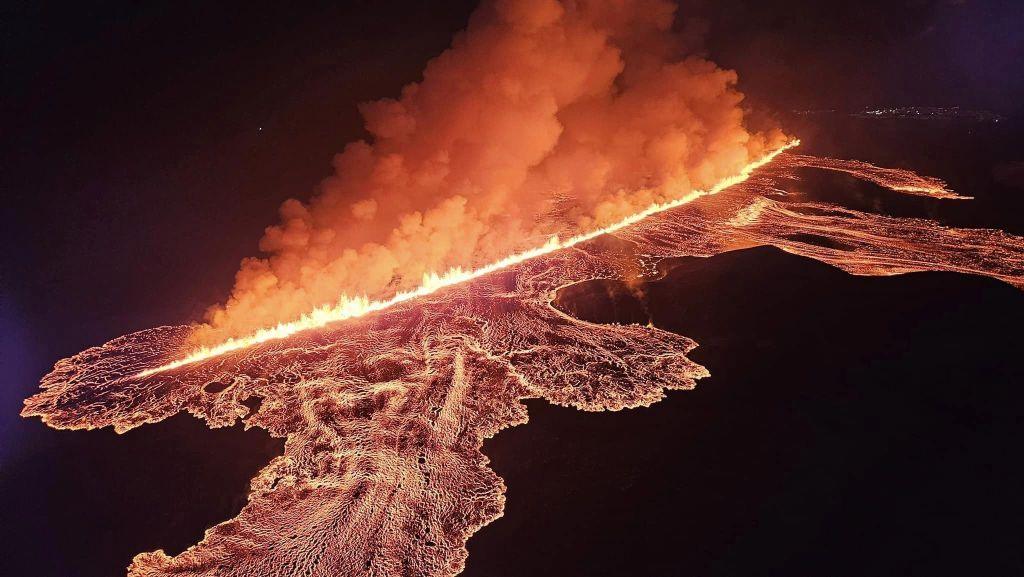Iceland volcano erupts for sixth time since December

A volcano in the Reykjanes Peninsula has erupted
- Published
A volcano in Iceland has erupted for the sixth time since December last year.
Red hot lava and smoke began to billow out of the Sundhn煤ks crater row in the Reykjanes Peninsula, south-west of Iceland on Thursday.
Sundhn煤ks crater row is a bit different to mountainous volcanoes, in that it has no tall central crater, but instead erupts by opening a long giant crack in the ground.
Speaking on social media, Iceland's ministry for foreign affairs said the volcano's impact "is limited to a localised area near the eruption site." and that " it does not present a threat to life and the area nearby was evacuated".
- Published1 May
- Published17 March
Iceland's Reykjanes struck by sixth volcano eruption in eight months
The Icelandic meteorological office (IMO) - a team of scientists who monitor volcanic activity in Iceland - noticed there was earthquake activity in the area earlier this week, meaning it was likely a volcanic eruption might happen.
Since it erupted, they have been keeping and eye on the size of the crack spewing lava, and said that it was around 3.9 km (2.42 miles) long.
They have also been monitoring the movement of the lava as it seeps out and spreads across the land.
The IMO said that, for now the lava was not flowing towards the nearby fishing town of Grindavik, but that they would continue to monitor it.
This picture shows the cooled lava flow in the town of Grindavik, taken in May 2024. The town was evacuated and noone was injured by the eruption.
In November 2023, eruptions from a volcano that had been dormant - sleeping - for around 800 years caused the small fishing town of Grindavik to be evacuated.
Around 3,800 people fled their homes, and although a few people have been back to visit since, many have not returned permanently, as the volcano has continued to erupt.
Since then authorities have built barriers to help redirect lava flows away from homes and important buildings like power plants, which supply energy to people's homes and businesses.
Iceland sits on the boundary between two of the largest tectonic plates on the planet, and has 33 active volcano systems.
